Accepted Scientific Name: Cleistocactus winteri subs. colademononis (Diers & Krahn) D.R.Hunt
Cactaceae Syst. Init. 20: 14. 2005 [Nov 2005]
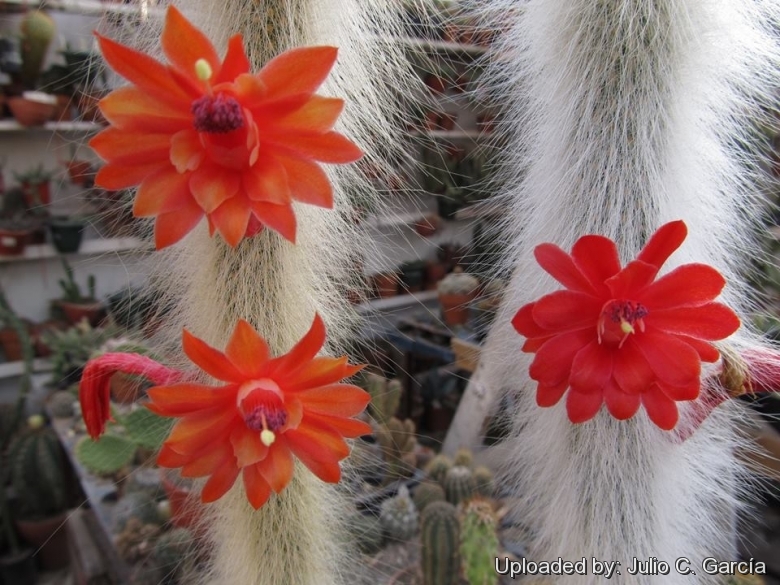
Cleistocactus colademononis (Cleistocactus winteri subs. colademononis) Photo by: Julio C. García
Origin and Habitat: Cleistocactus colademononisSN|9578]]SN|9578]] is endemic to the Bolivian department of Santa Cruz in the province of Florida, Bolivia, about 30 kilometers east of Samaipata, on the Cerro El Fraile mountain
Altitude: 1300-1500 meters above sea level.
Habitat: The species is epilithic, grows hanging from steep rock faces protruding above the surrounding jungle.
Synonyms:
See all synonyms of Cleistocactus winteri
Common Names include:
ENGLISH: Rat Tail, Monkey's tail
ITALIAN (Italiano): Coda di scimmia
SPANISH (Español): Cola de Mono, Colademono
Description: Cleistocactus winteriSN|3784]]SN|3784]] subs. colademononis, sometimes listed under its old name of Hildewintera colademononisSN|9579]]SN|9579]], is a fantastic plant with very long white and soft, hairlike spines. The common name “monkey's tail” refers to the appearance of the hairy stems. It is free flowering and the outsize bright red blooms are particularly decorative.
Habitat: Cleistocactus winteriSN|3784]]SN|3784]] subs. colademononis is a vigorous, epilithic (growing on rocks) cactus, branching at the base. At first upright, then pendent and is up to 2.5 meters long
Stems: Cylindrical, light green 2-7 cm across, completely concealed by the spines.
Ribs: 14-20 low.
Areoles: 3-6 mm apart.
Spines: (0 to) 4-8 more or less pointing downward, bristle-like yellowish and 20-50 hair-like, white, 4-8 (up to 12) cm long spines . The hair-like spines grow gradually.
Flower: Bright red, 7-8 cm long, zygomorphic, almost horizontal from the the areola.
Fruits: More or less spherical, reddish 8-12 mm in diameter, drying and splitting open lengthwise at maturity.
Seeds: Black, 1.1-1.4 mm long and slightly curved. They germinate easily.
Bibliography: Major references and further lectures
1) Walter Haage “Kakteen von A bis Z.” Anaconda, Köln 2008
2) Detlev Metzing: “Winterocereus colademononis” In: Kakteen und andere Sukkulenten. 62:3, XI–XII. 2011
3) Detlev Metzing, Robert Kiesling “Winterocereus (Cactaceae) is the correct name for Hildewintera” In: Taxon. 56:1 226–228, 2007
4) L. Diers, W. Krahn: “Hildewintera colademononis spec. nov.” In: Kakteen und andere Sukkulenten. 54: 221 2003
5) CactusWorld. 24:1 2006
6) Cactus and Succulent Journal, Volume 79, page 31, 2007
7) V.Foik e Foik “Hildewintera polonica V.Foik & Foik spec. nova” Cactaceae etc. 2: 2003
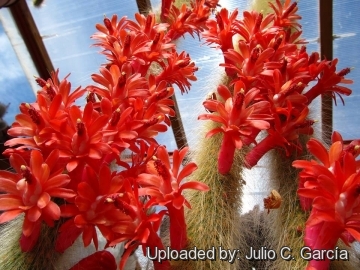 Cleistocactus colademononis (Cleistocactus winteri subs. colademononis) Photo by: Julio C. García
Cleistocactus colademononis (Cleistocactus winteri subs. colademononis) Photo by: Julio C. García Cleistocactus colademononis (Cleistocactus winteri subs. colademononis) Photo by: Julio C. García
Cleistocactus colademononis (Cleistocactus winteri subs. colademononis) Photo by: Julio C. García Cleistocactus colademononis (Cleistocactus winteri subs. colademononis) Photo by: Alexander Arzberger
Cleistocactus colademononis (Cleistocactus winteri subs. colademononis) Photo by: Alexander Arzberger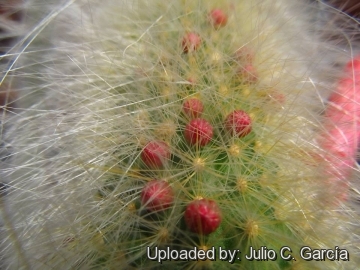 Cleistocactus colademononis (Cleistocactus winteri subs. colademononis) Photo by: Julio C. García
Cleistocactus colademononis (Cleistocactus winteri subs. colademononis) Photo by: Julio C. García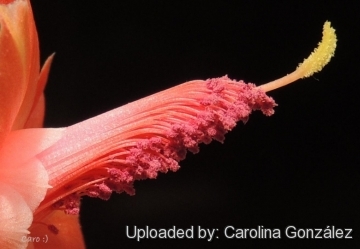 Cleistocactus colademononis (Cleistocactus winteri subs. colademononis) Photo by: Carolina González
Cleistocactus colademononis (Cleistocactus winteri subs. colademononis) Photo by: Carolina González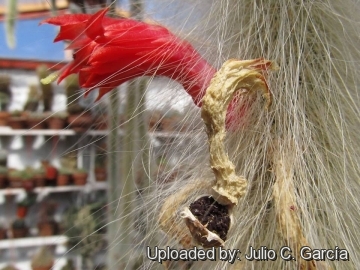 Cleistocactus colademononis (Cleistocactus winteri subs. colademononis) Photo by: Julio C. García
Cleistocactus colademononis (Cleistocactus winteri subs. colademononis) Photo by: Julio C. García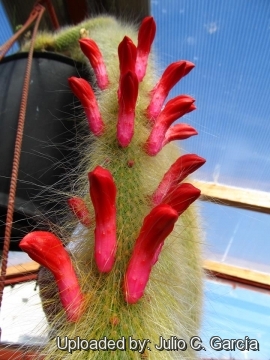 Cleistocactus colademononis (Cleistocactus winteri subs. colademononis) Photo by: Julio C. García
Cleistocactus colademononis (Cleistocactus winteri subs. colademononis) Photo by: Julio C. García Cleistocactus colademononis (Cleistocactus winteri subs. colademononis) Photo by: Diego Armentano
Cleistocactus colademononis (Cleistocactus winteri subs. colademononis) Photo by: Diego ArmentanoCultivation and Propagation: Cleistocactus winteriSN|3784]]SN|3784]] subs. colademononis is of easy culture, which makes it a good cactus for beginners. It suited to hanging baskets as well as pots.
Soil: Use a loose well drained cactus mix.
Repotting: Since they are rapid growers need plenty of space for their roots, repotting with fresh potting-mix should be done every other year or when the plant has outgrown its pot. However, repotting doesn't necessarily mean they'll need larger containers.
Sun Exposure: Require filtered bright light, partial sun or light shade, but not in full sun that will sunscald it.
Watering: They require moderately watering through the growing season. This can be done weekly or more frequently during the summertime, if the weather is sunny enough, but allow to dry fully before watering again. Kept this way, plants will show a healthy growth. Keep rather dry as soon as the temperature starts dropping in October and keep it dry in winter. The plant survives outside without protection in winter (cold hardy to -2° ) but is then somewhat prone to rot, too.
Fertilization: Give an occasional high potassium liquid feed during the active growing period.
Hardiness: Winter care presents no problems at temperatures from 5 to 15 degrees centigrade with plenty of light, but frost hardy to -2°C for short periods if very dry. This plant needs a period of cool rest in winter to produce flowers abundantly. It flowers freely indoors too if conditions suit it.
Pest and diseases: They are generally fairly easy to grow, especially if kept pest-free. They are susceptible to, scale insects and spider mite. Watch carefully for infestations of stem and root mealy bugs, and damage from these may well initiate fungal attack.
Propagation: Easy to propagate from cuttings or seeds. Take cuttings spring or summer, let them dry till the ends callous well. Then replant them in fresh cactus soil that is ever so slightly moist, and keep it that way till they root. Surface sowing is the best; seeds germinate in 14-28 days at 20° C, remembering that seedlings dislike strong light and dry conditions.
Your Photos

by Julio C. García

by Julio C. García

by Agócs György

by Giuseppe Distefano

by Carolina González























